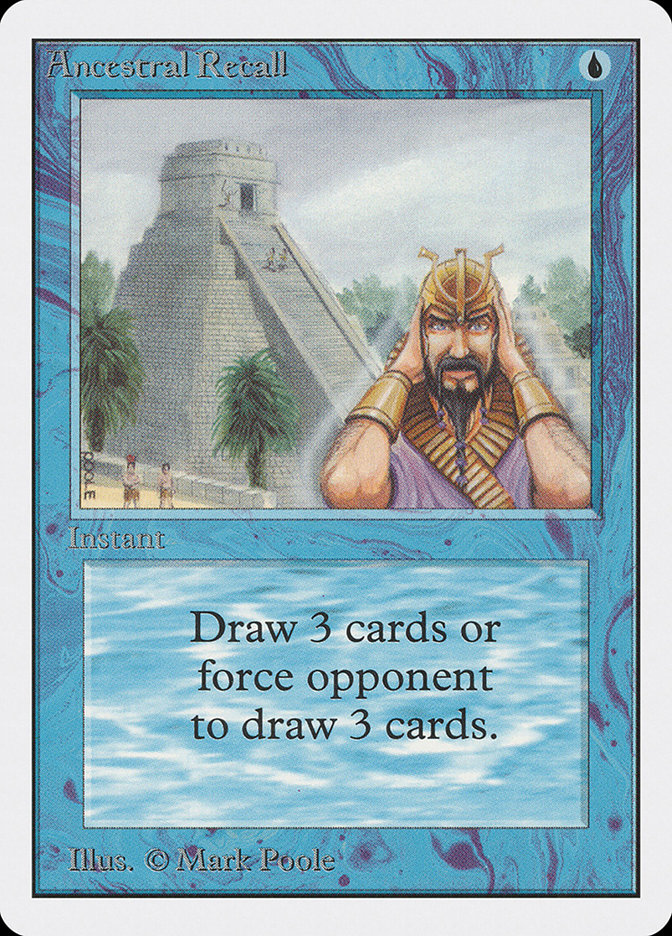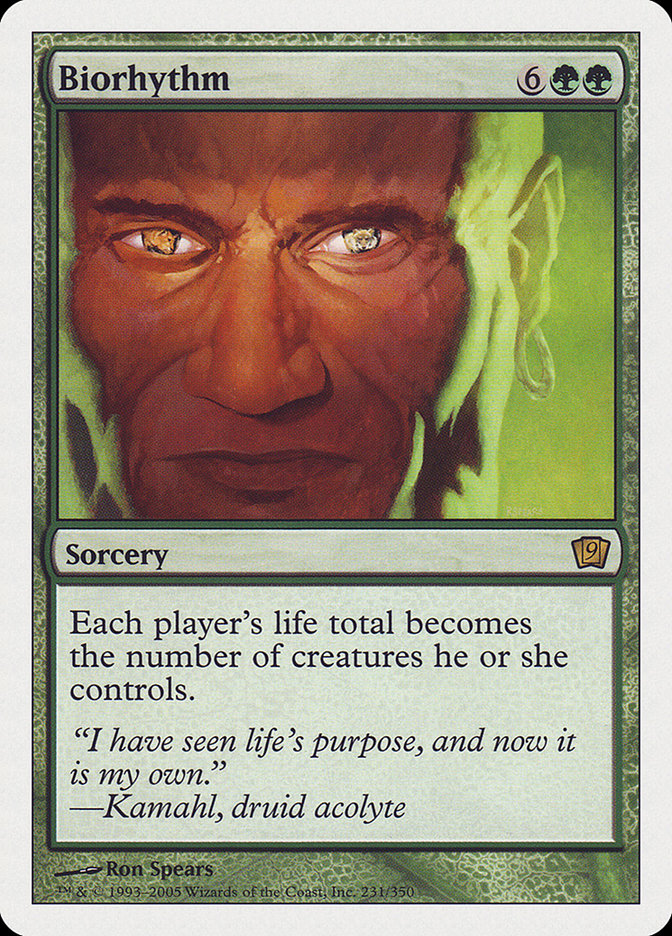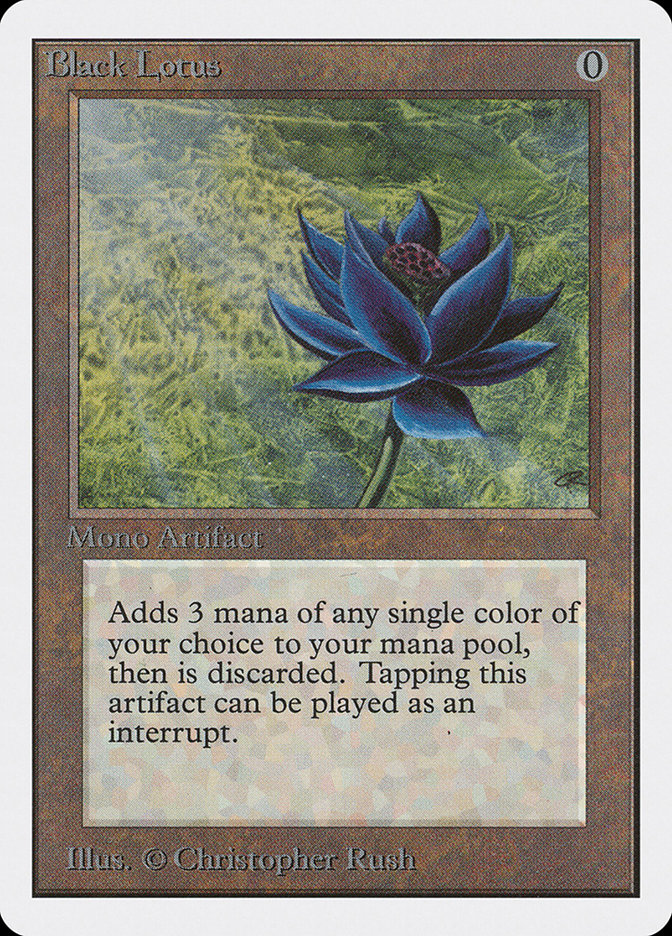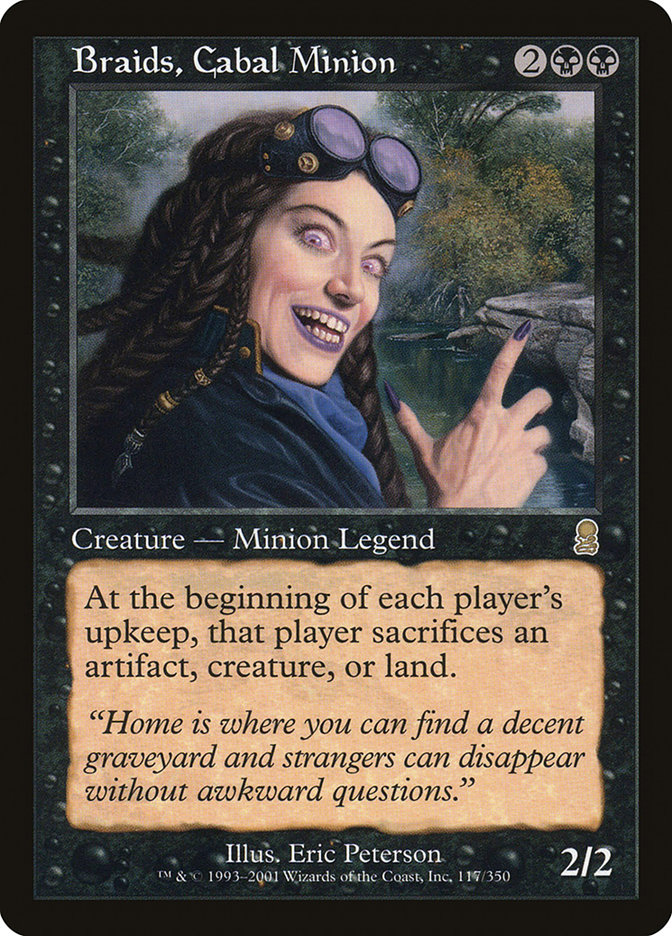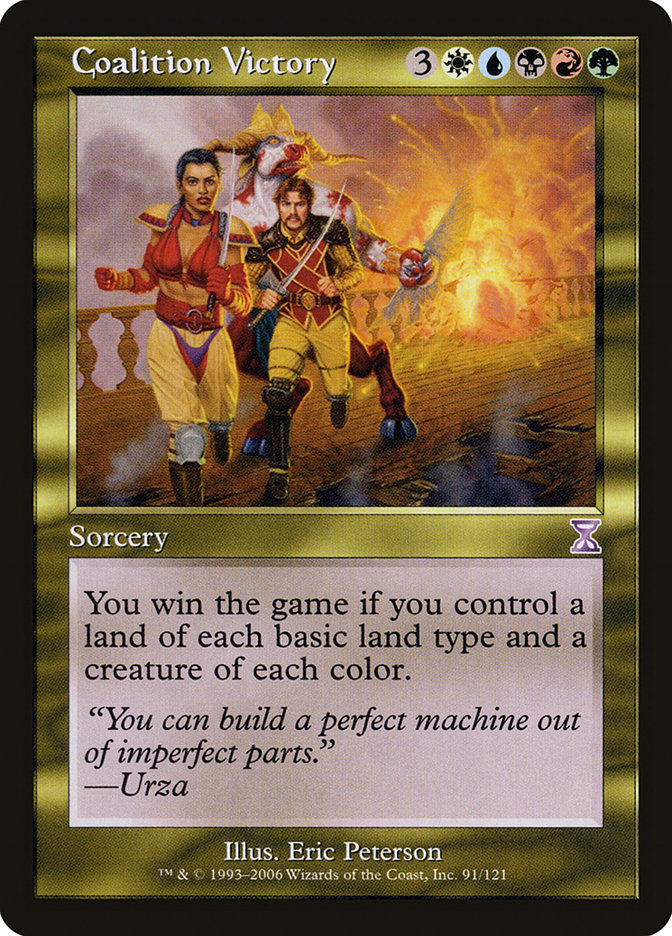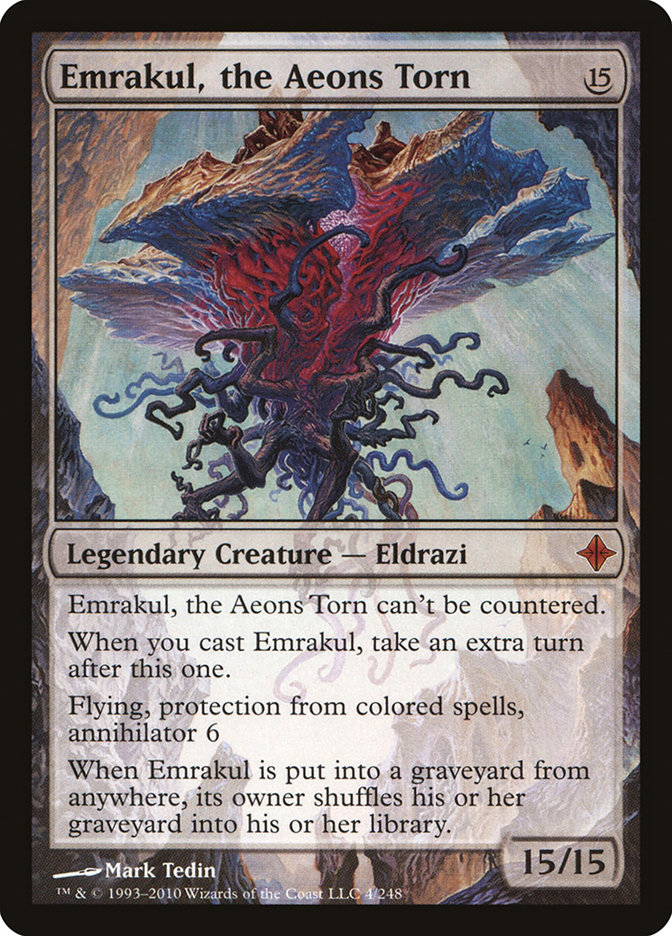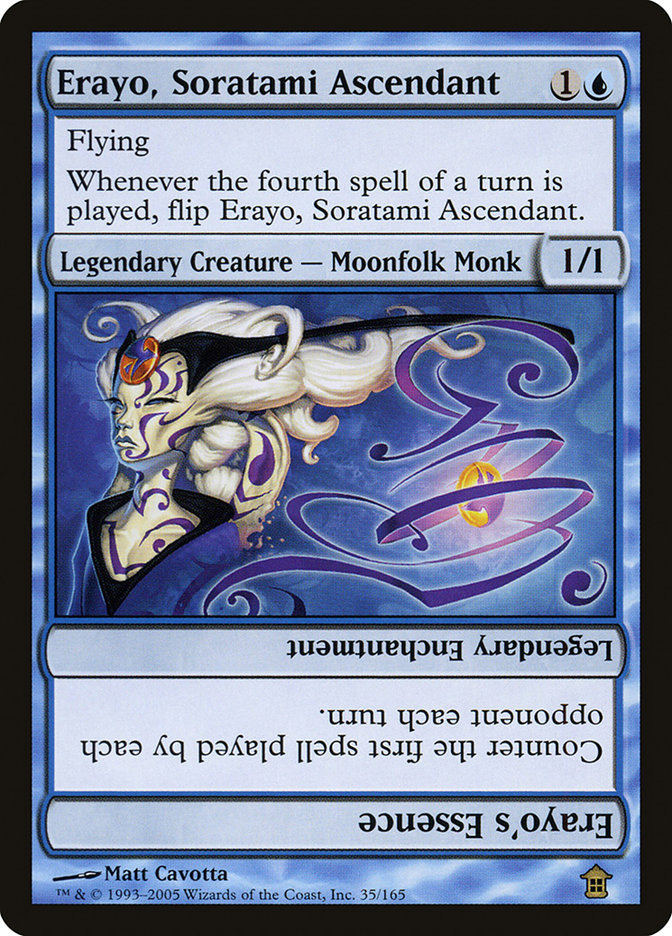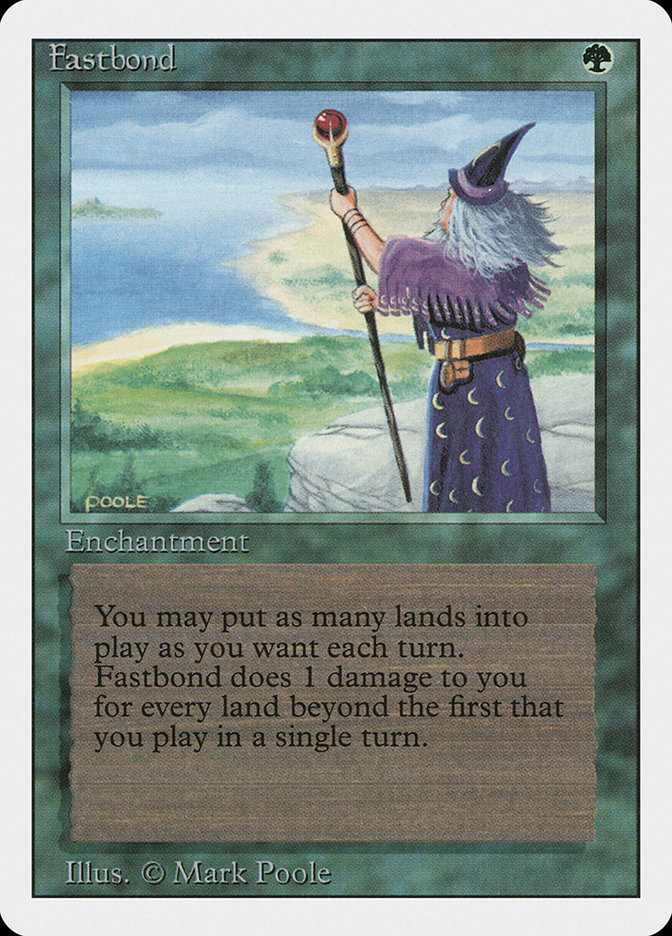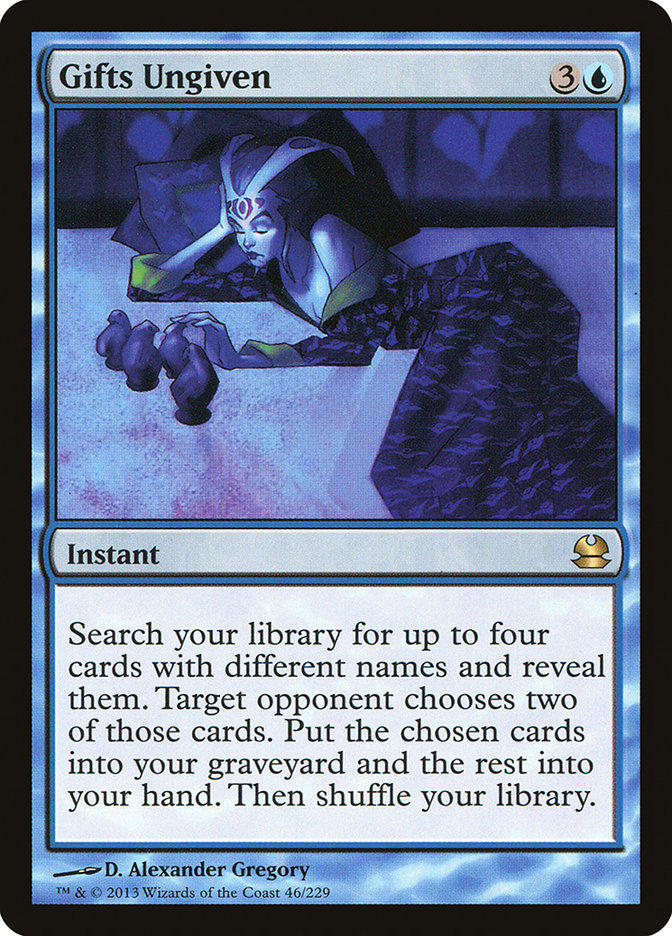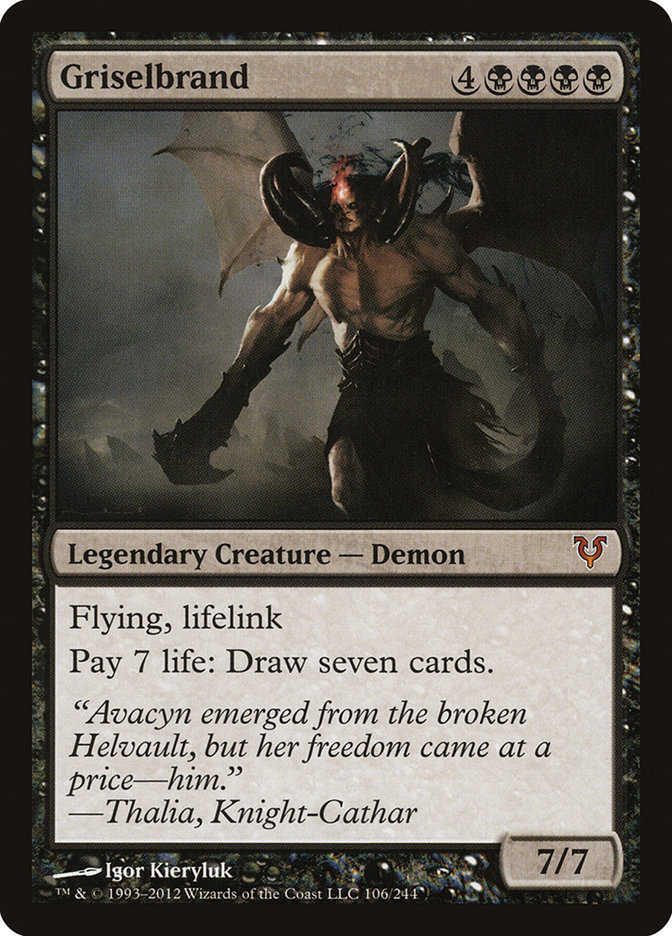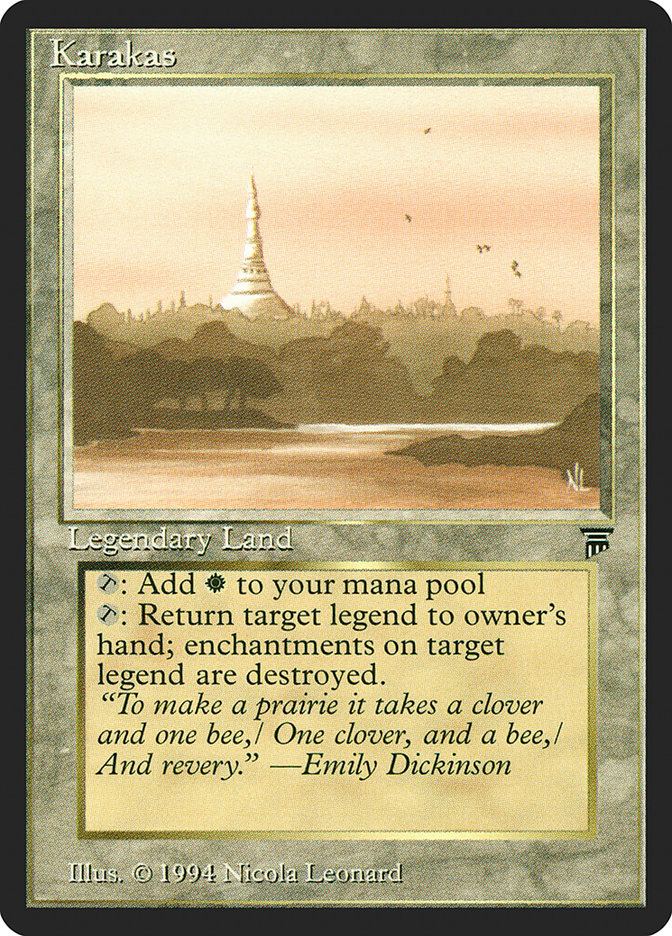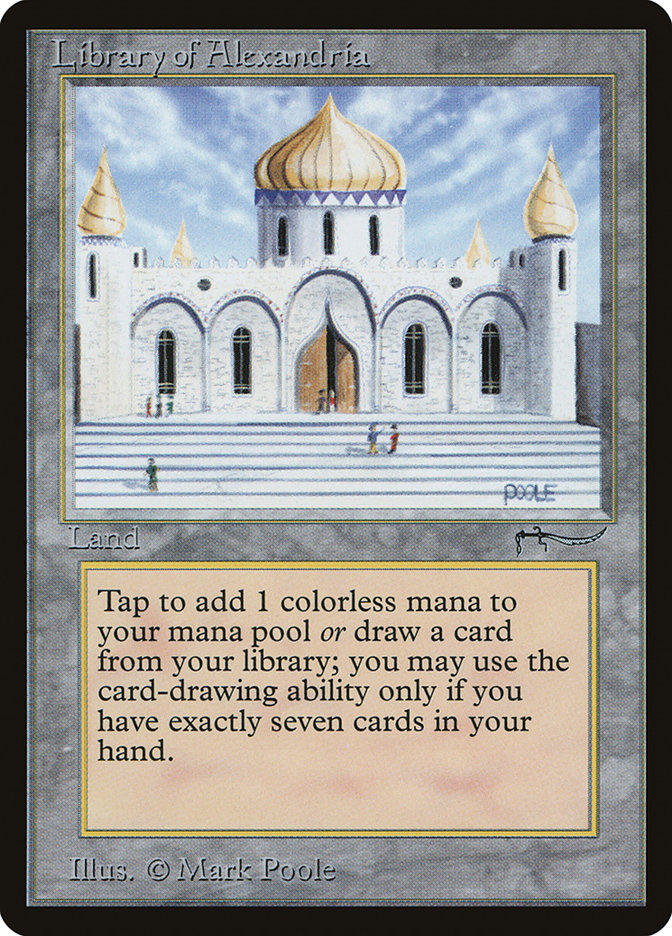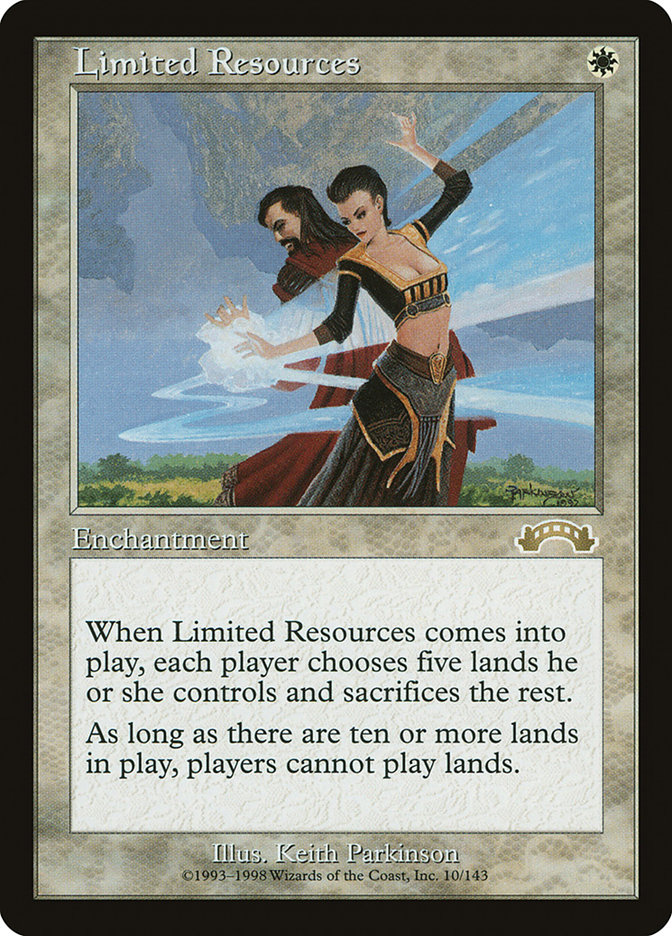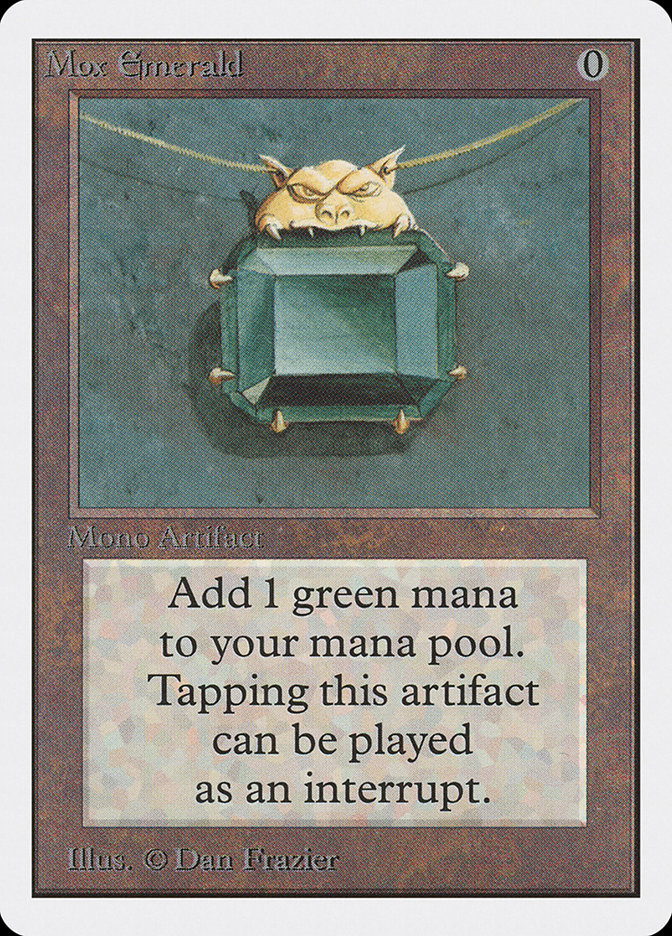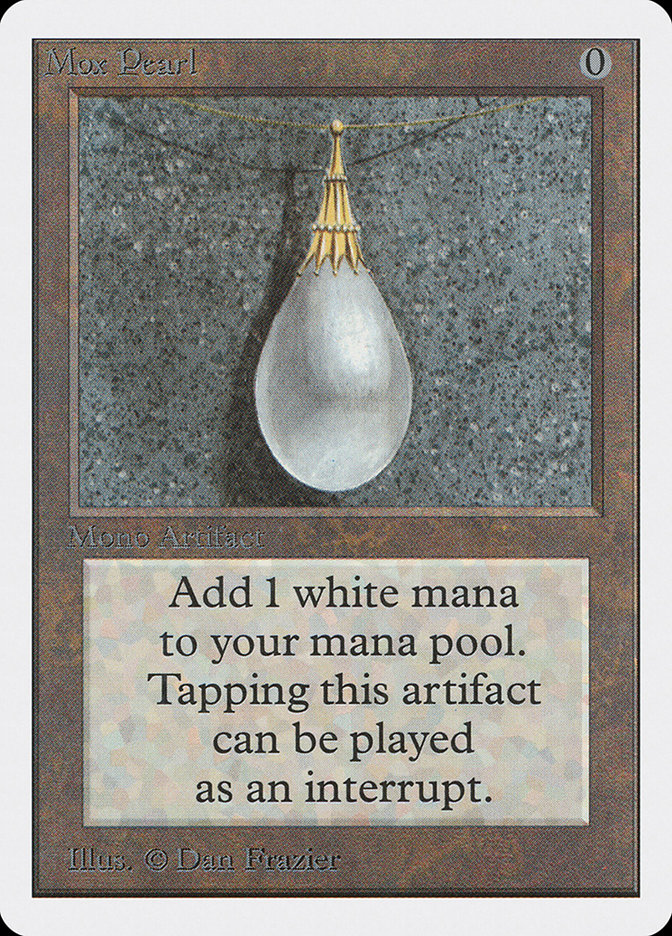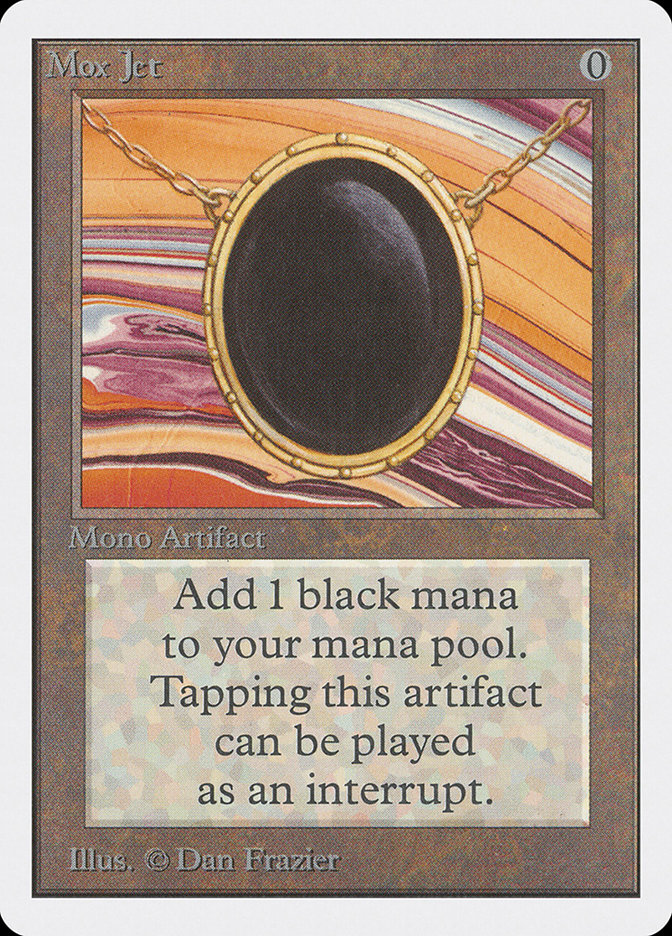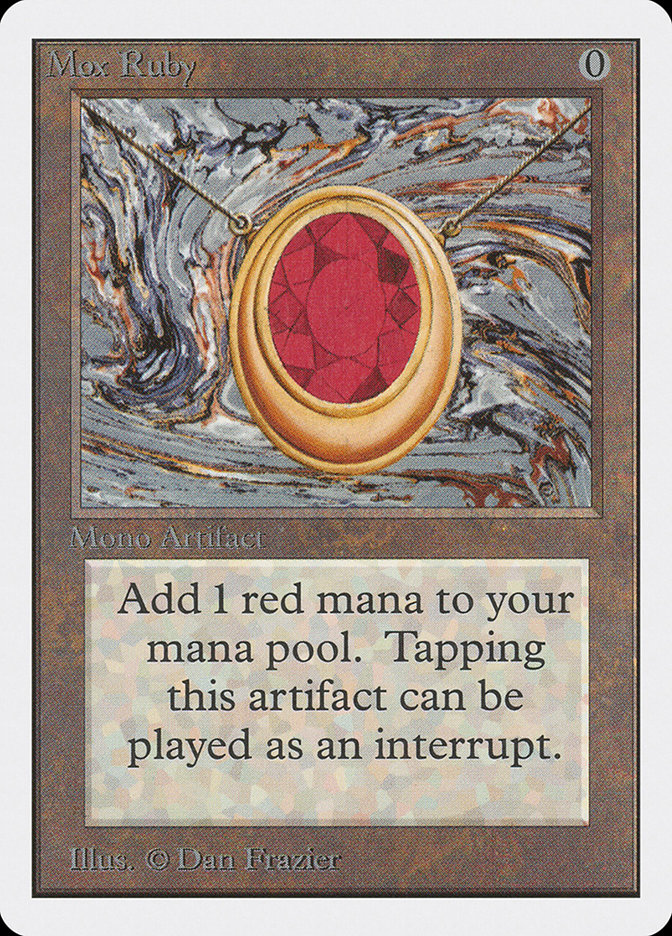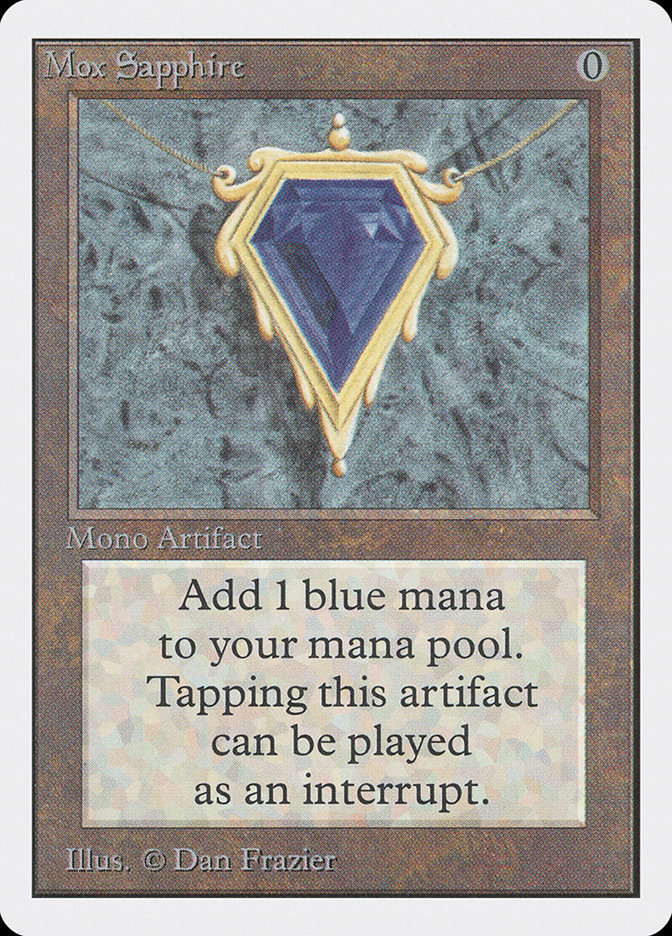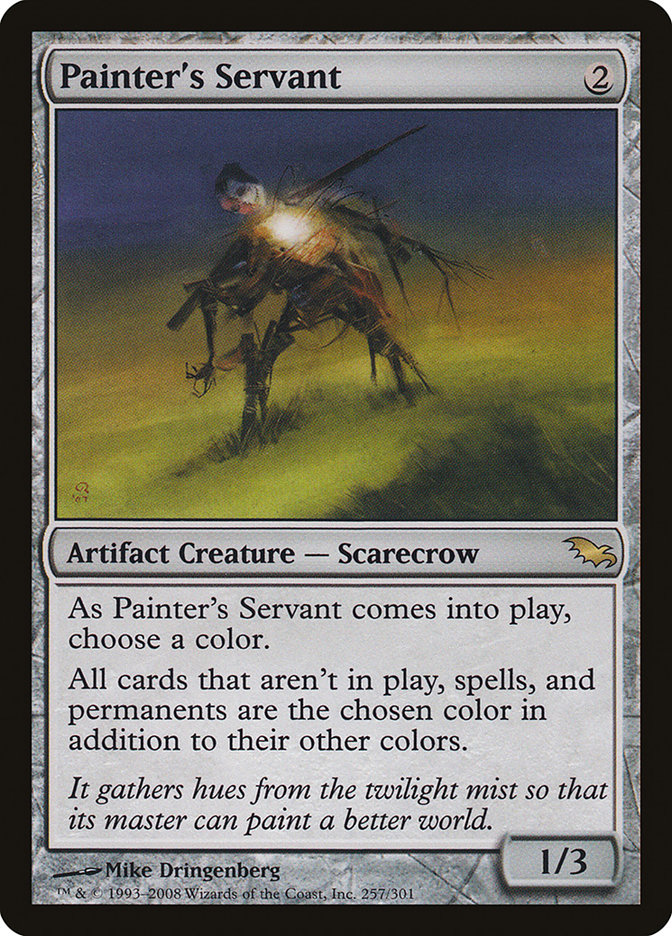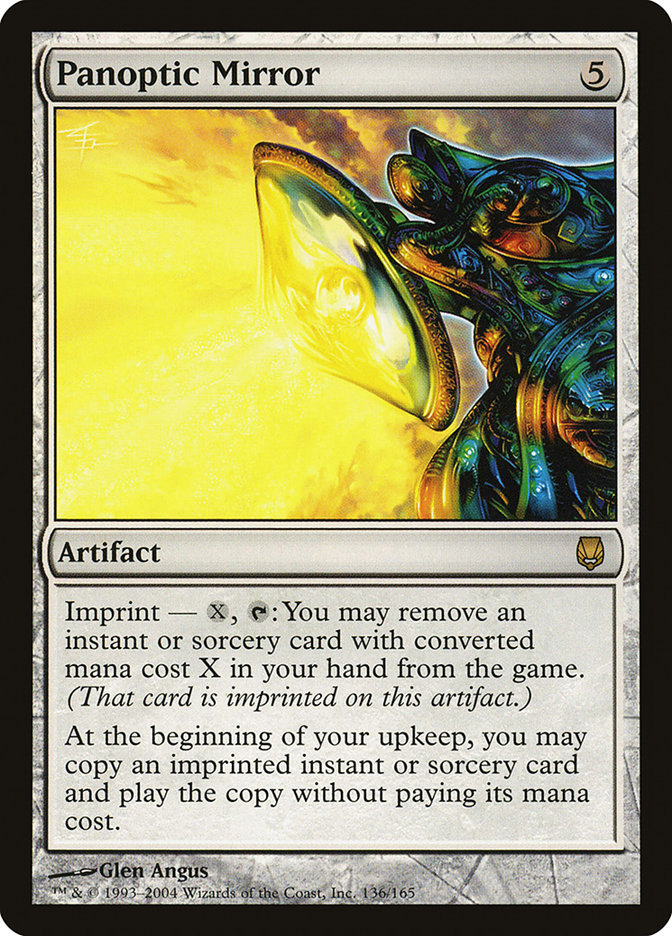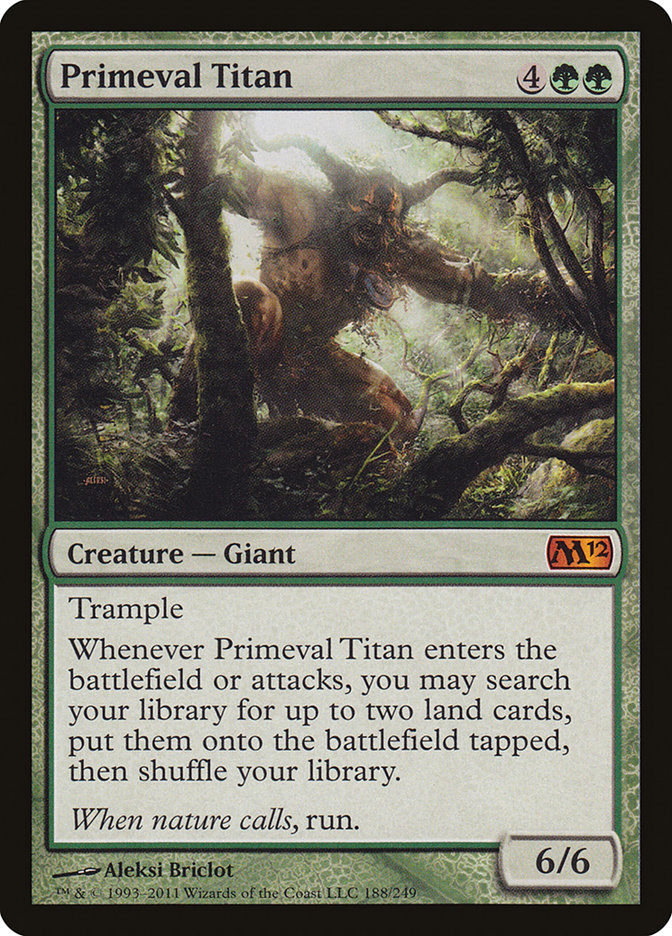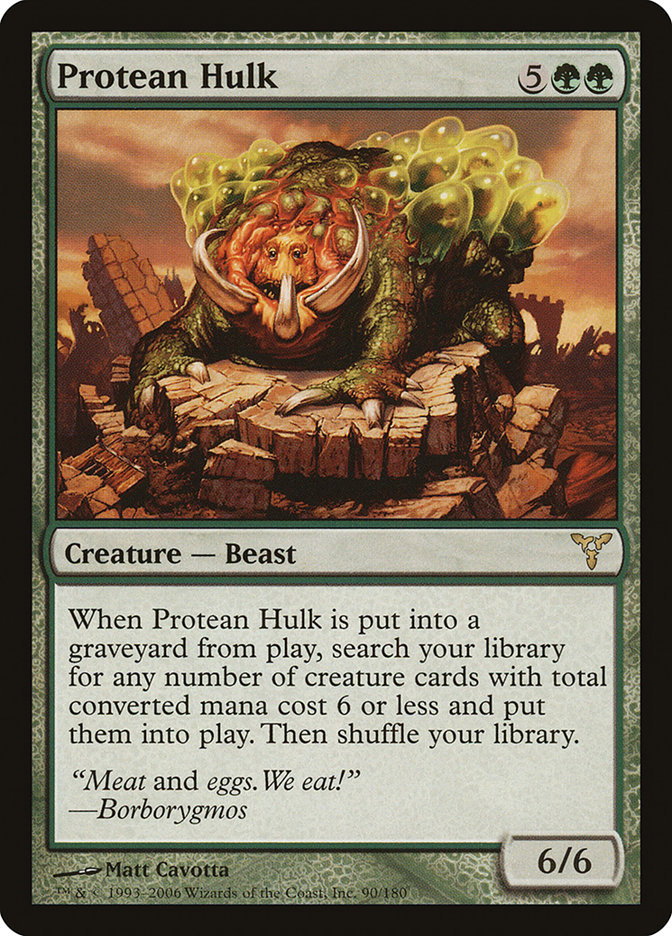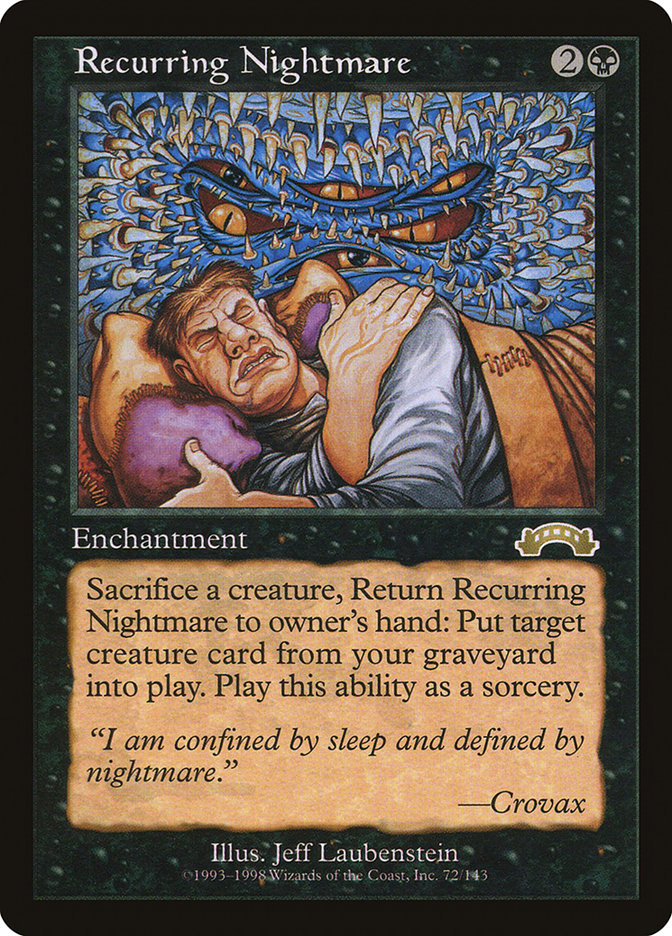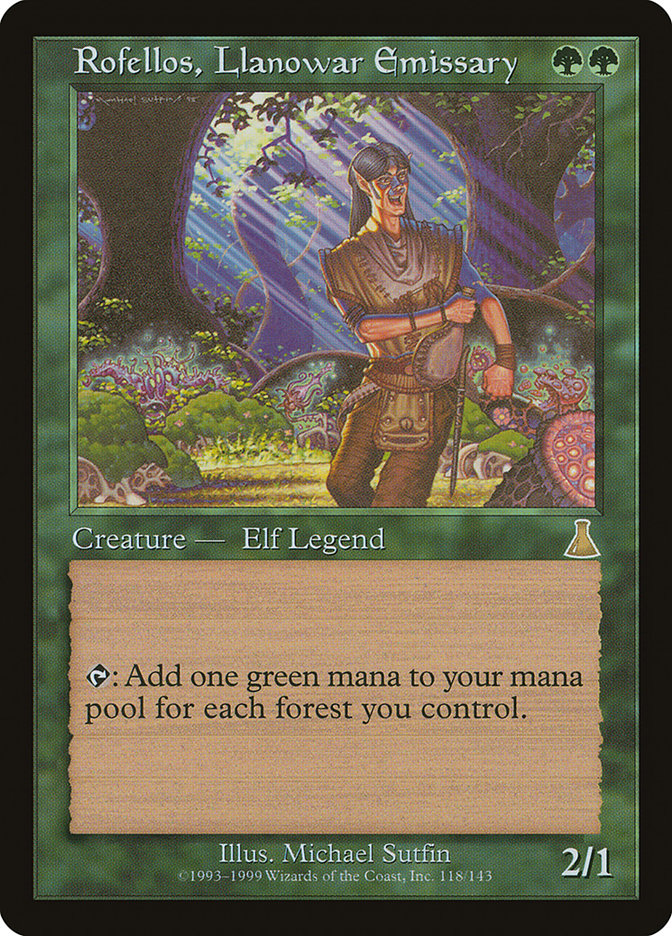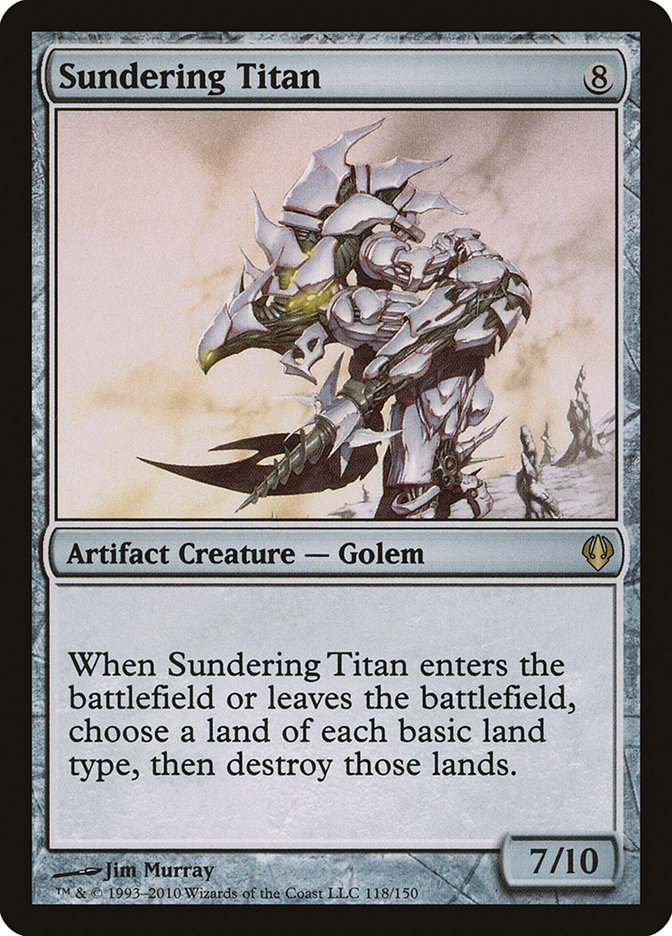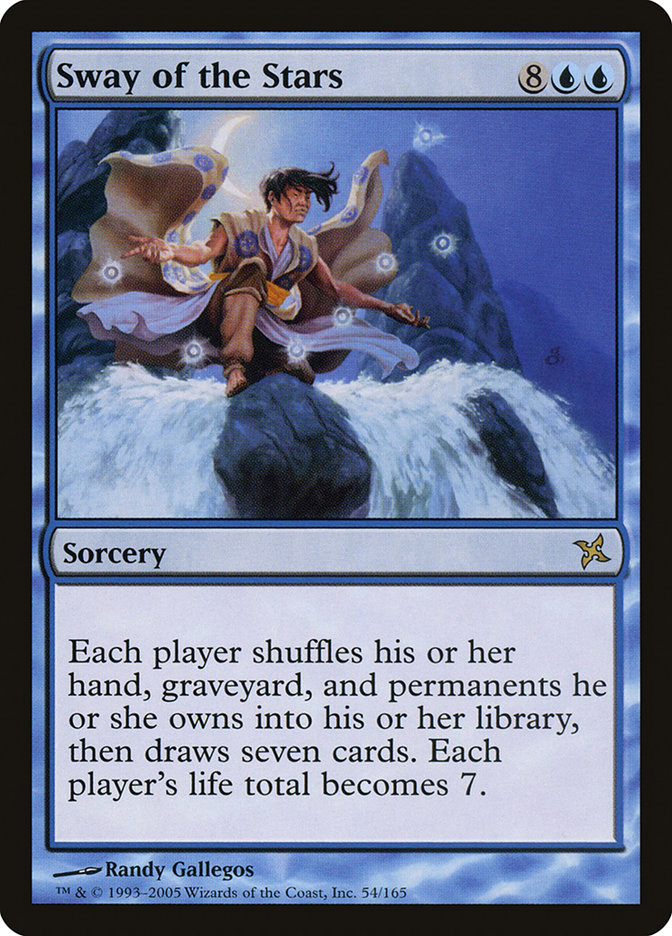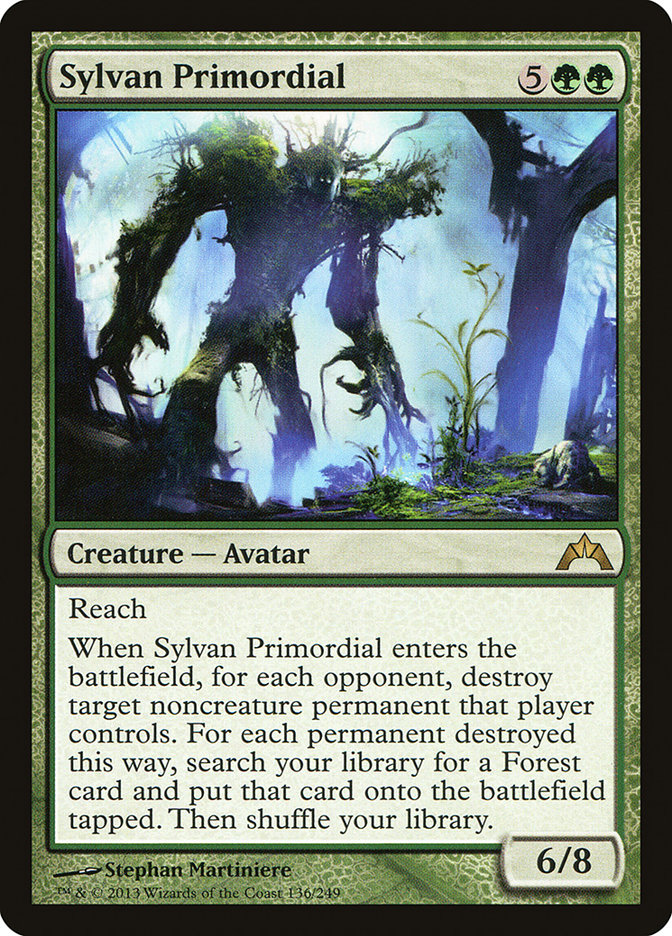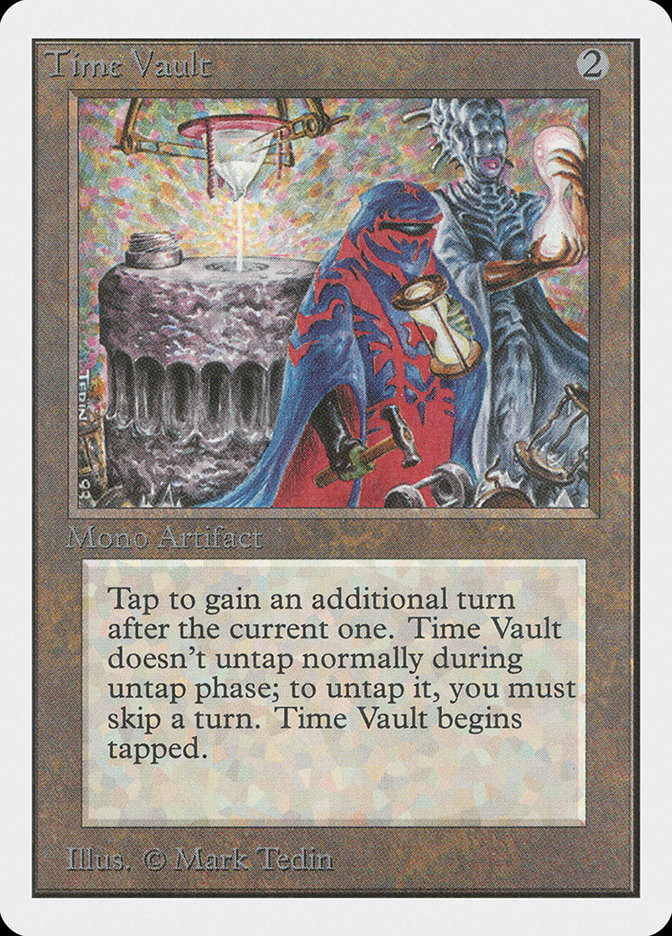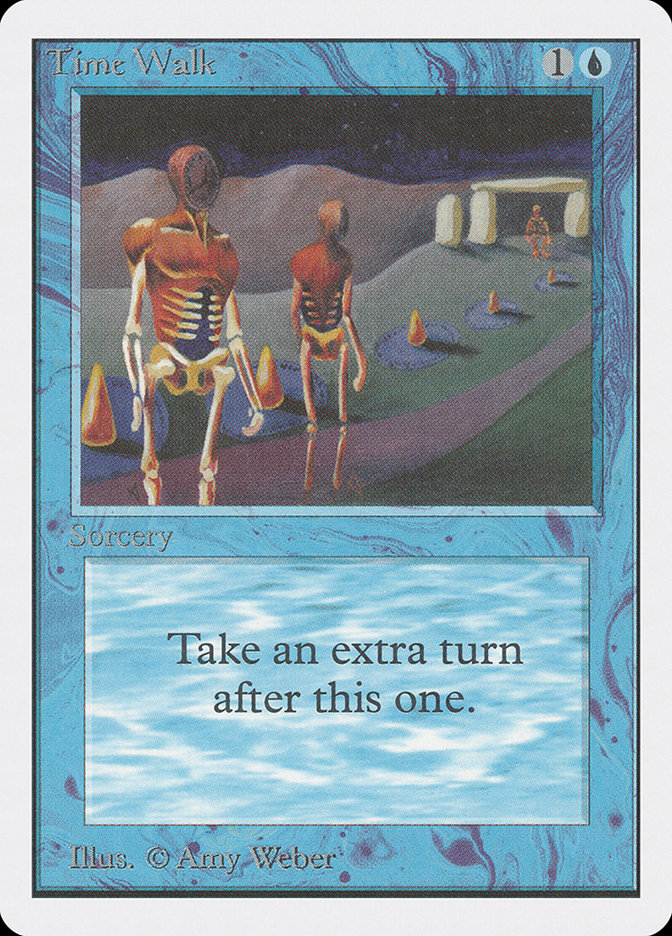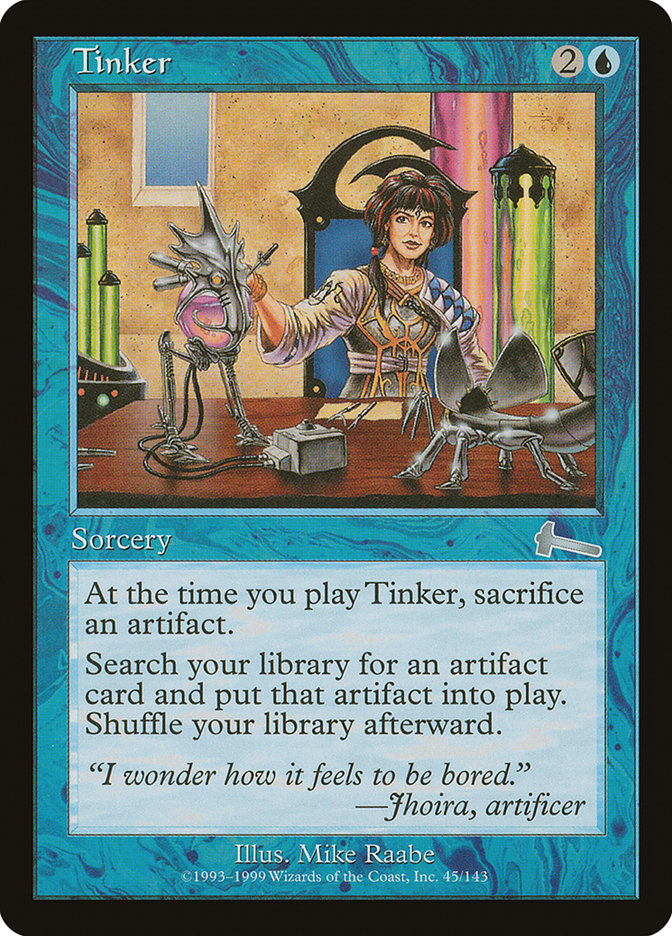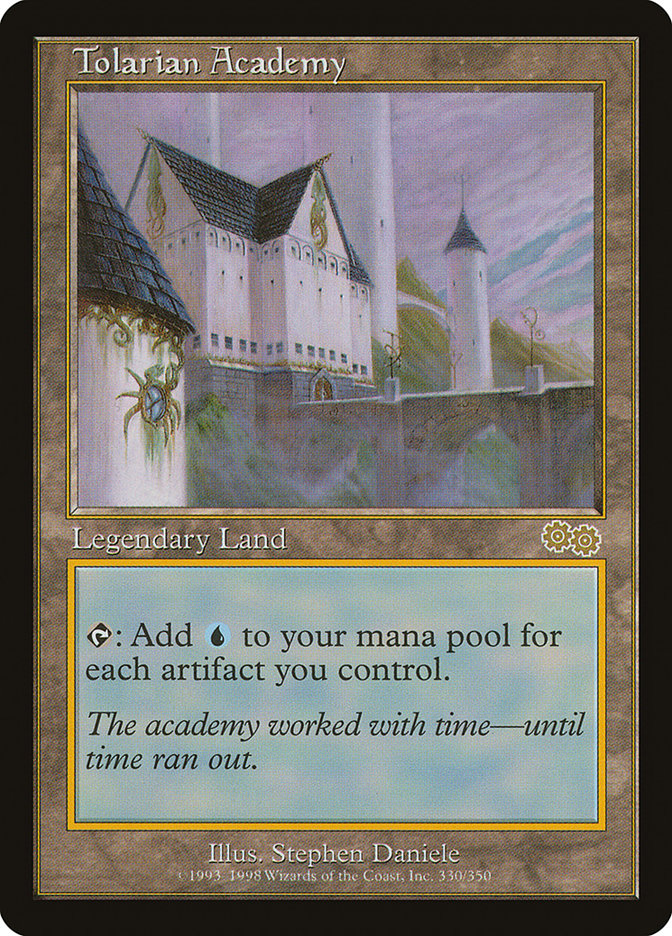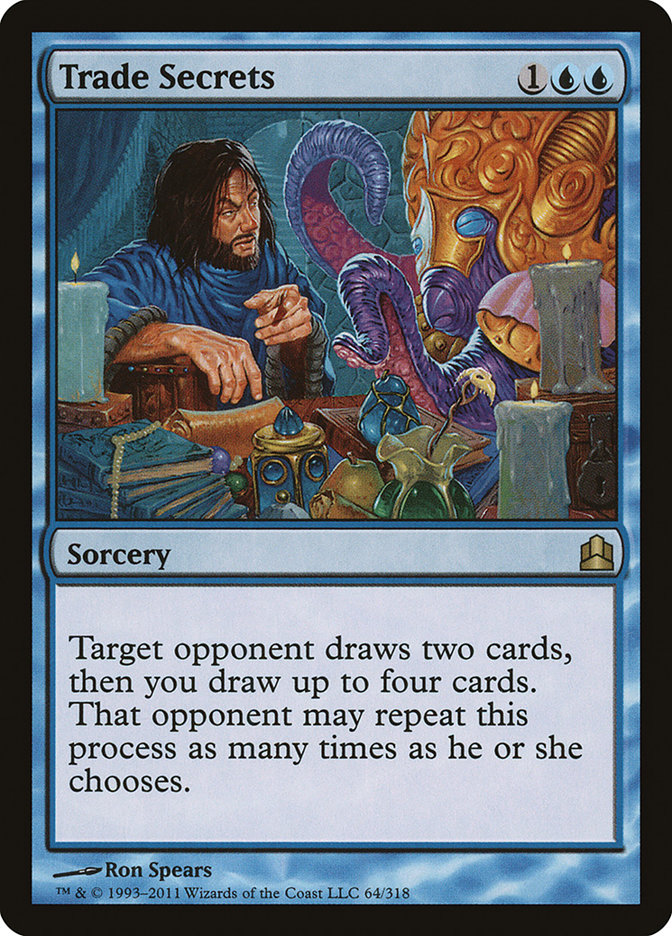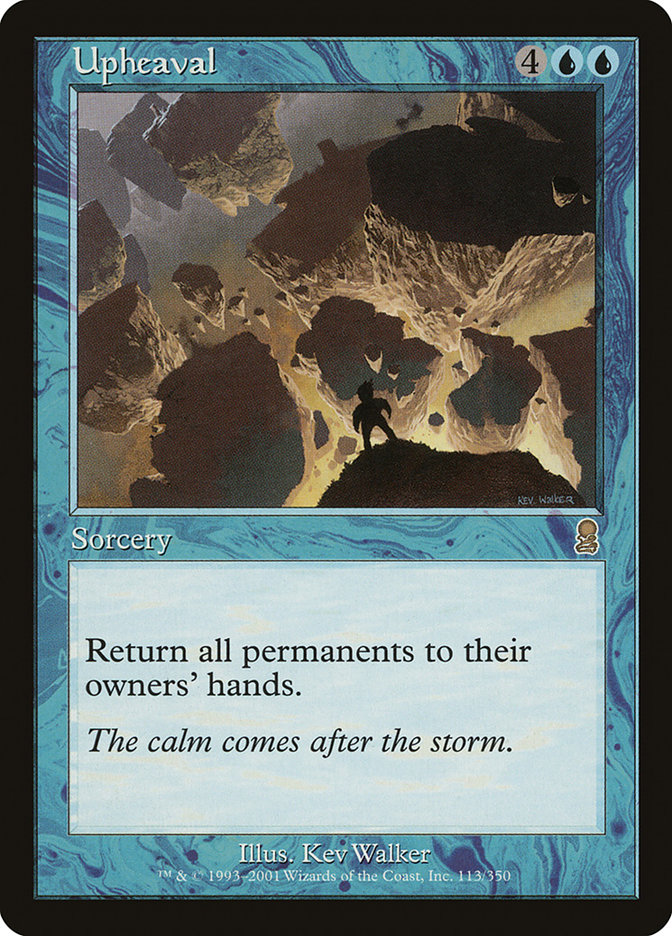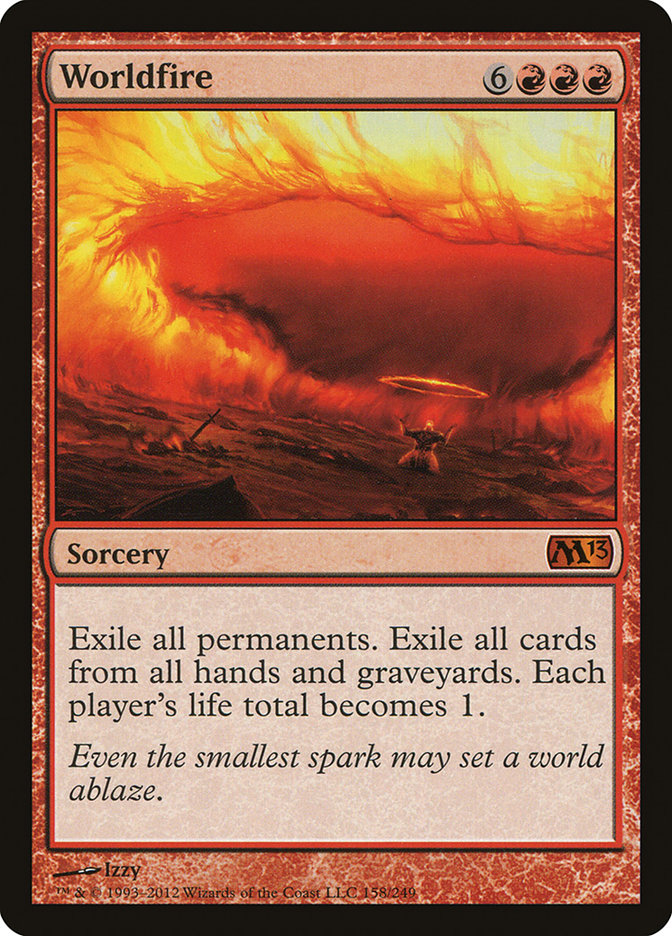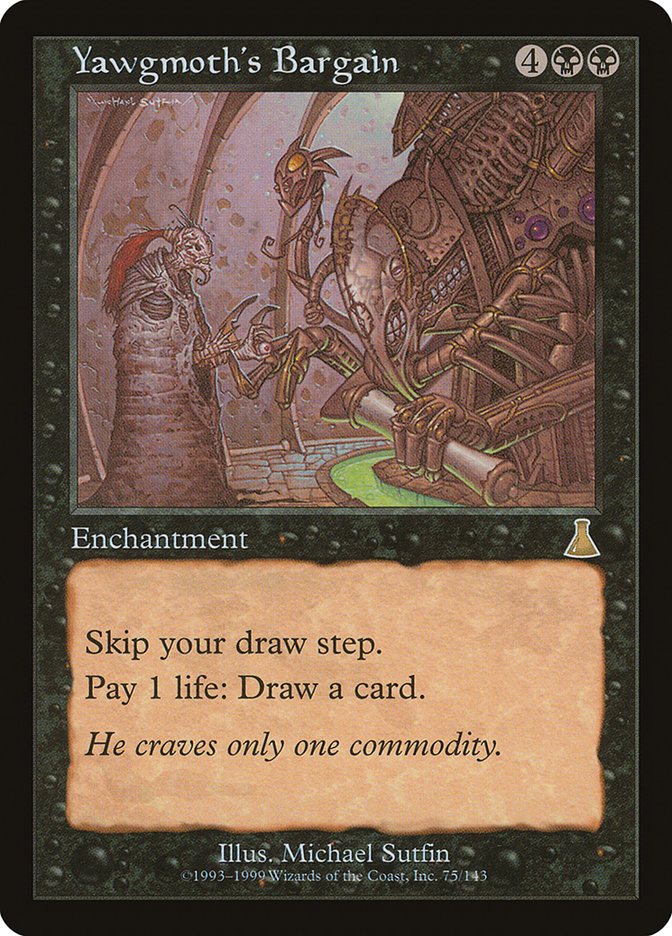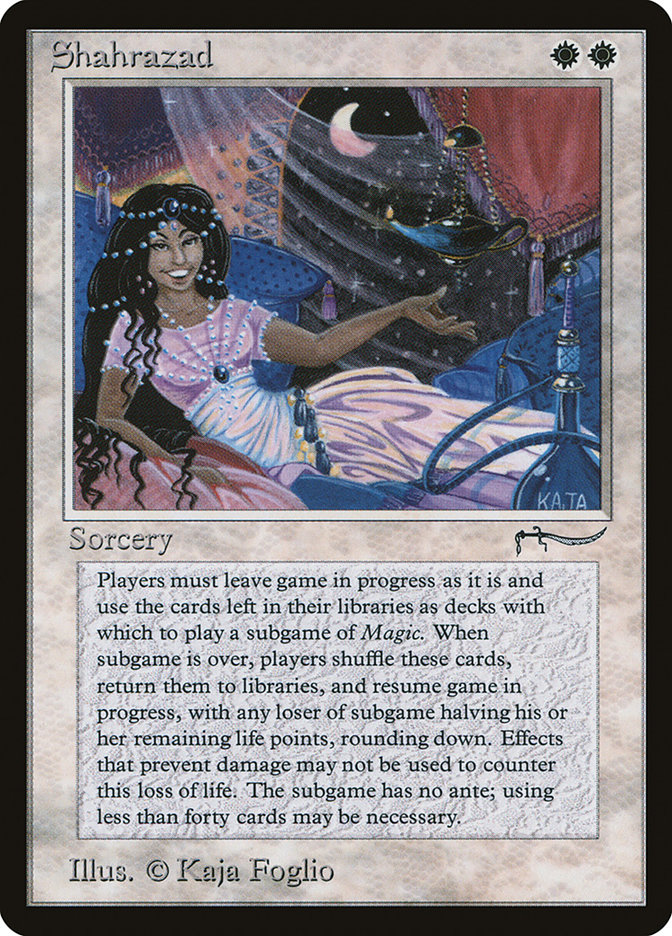People are thankful for many things on this American holiday. Among other things, I’m thankful for the opportunity to live an amazing life with an amazing
partner-but you didn’t tune in to hear about personal stuff, you want to hear about Commander. I was going to do an article called “Cards I’m Thankful for
When They Get Blown Up,” but that felt like it might have just been a ” You Can’t Get Mad” clip show. I’m sure there are plenty of cards that can go on
the Can’t Get Mad, Version 5 list; maybe we’ll hit that in the near future.
I’m thankful for the Banned List. That might be an odd thing to say because banned cards tend to carry a negative connotation. After all, they’re banned
because they do bad things. I’m not going to confess too much love for any of these cards, but the list as a whole sculpts a narrative of the format. It
crafts not only specific cards that we think are dangerous to our vision for the format, but when they’re taken together, players can get a sense of what
the format is about.
This is an article that’s been coming for a while. I’ve received numerous requests to talk about the cards on the banned list as a reminder of why they’re
on it. The easy way out is to say “look at the philosophy document,” but you
deserve a little more than that. Some of the cards are easy in that they fit cleanly into one or more categories we consider; some fall into a more gray
area. This is not meant to be a definitive (or scientifically objective-based) discussion on the list or the final word on any of these cards, but to give
you a sense of what got them on the list in the first place and why they’re still there.
The above-listed article references five points which we consider for banning a card. Briefly, those five are:
- Creates Undesirable Games/Game Situations
- Warps the Format Strategically
- Produces Too Much Mana Too Quickly
- Interacts Badly with the Structure of Commander
- Creates Perceived High Barrier to Entry
You can get a more detailed description of those categories in the article. The salient point is that it’s not always easily objective to see where a card
falls; sometimes it’s the intersection of those criteria that will get it banned. Let’s talk about the cards individually.
As one of the Power 8, Ancestral Recall falls into the High Barrier to Entry category. The barrier to entry isn’t just about price, it’s about price and
availability. The idea is to attract more players to the format, and we feel as though these cards are antithetical to that. More than one member of the
Commander Rules Committee (RC) has mentioned publicly that it’s highly unlikely that we invoke this category for new cards.
I’ve said before that if we had a Survivor-type competition and cards were removed from the list one at a time, Balance would be the last one standing.
Perhaps it still carries some stigma from the olden days when it got played alongside Moxen. Nonetheless, its cost-to-benefit ratio is extreme. And you’re
going to hear me say this a number of times referencing this list: the thing that it does tends to take the game away from other players. We’d like people
to be involved in the games they play, not spectators.
When the format was in its primordial soup stage up in Anchorage, Alaska (five players, each with one of the Elder Dragons as the general), Biorhythm was a
common game-ender, or in the worst case, a game-drawer. It is a card which interacts poorly with the format, especially with the higher life totals and
given that there are frequent board wipes in the game. It’s one of those cards that will deflate what was otherwise a fun experience.
Another Power 8 and Barrier to Entry card, adding the Lotus (along with the Moxen) to the format would simply provide too much early fuel. While we’re
comfortable with a little early gas like Sol Ring, we understand there’s a careful balance to be struck here.
Recently, we got rid of the “Banned as a Commander” category. We decided in the interest of simplicity that if a card was bad enough to keep out of the
command zone, it’s probably worth keeping out of the 99 as well (which I suppose puts it in the “Interacts Poorly with the Format” category). Of the cards
which got completely banned in that move, Braids was the one that generated the most discussion. Many folks saw the others as pretty clear-cut (even if
they loved them). I’ll admit that Braids for the most part isn’t all that offensive as 1 of 99, but there’s also not a compelling reason to make a special
rule for it.
Too much mana way too fast. In retrospect, I’m surprised it took us as long as it did to ban it.
Coalition Victory is another one of those cards that will deflate an otherwise good experience. We’re not huge fans of “win the game” cards; having
frequently difficult to achieve conditions is what keeps around the other ones (like Felidar Sovereign or Test of Endurance). Coalition Victory is too
easily achievable for the only decks that it can be in.
When Emrakul was legal, you could see its emotional impact on the game. Every time someone cast it, the table would be seized with a palpable tension. We
understand that it’s a game, that there has to eventually be a winner and that it can’t be all sunshine and unicorns, but that doesn’t mean there has to be
constant dark clouds either. Emrakul was the darkest of clouds.
Erayo simply too easily took the game away from the other players. Effective at winning games by making sure other players can’t do anything, it’s not
effective at creating an engaging environment.
In a format where the life totals are higher, paying life for mana (or anything, really) becomes something to keep an eye on. Fastbond costing only G makes
it dangerous. If it cost 3R and was a creature, the discussion might be different.
While there are a few other cards that can tutor up combo pieces, none does it as effectively and efficiently as Gifts Ungiven-especially since it’s an
instant.
This is a card which I’d love to be able to be legal. It’s a big, fat monster that does a cool thing. Unfortunately, it does it too well, and most
importantly, too immediately.
Our love for Karakas was such that in the olden days we were willing to do considerable gymnastics in order to keep it legal. At a certain point, we
realized that format-level errata was a bad idea, and Karakas was sent to the permanent penalty box.
Library is one of the Banned List cards which gets most talked about, and probably the one that generates the most “please, please unban it” requests. If
we were to unban it, I don’t think it would be apocalyptic (like a few other cards on the list), but I think it would still be a negative. There might be arguable reasons to unban it; I don’t think there are compelling ones.
This is another one that might not be on the list if it had a much higher mana cost. At 3WW or 4WW, it might be okay-ish. As it is, it’s an awful card for
a multiplayer format.
See. Black. Lotus.
Another card which gets a good deal of by-play, the RC frequently discusses Painter’s Servant because the community frequently discusses it. We’ve
continually come to the same conclusion about keeping it on the list-it’s dangerous in light of other cards in the format.
Like Library of Alexandria, I don’t think that unbanning Panoptic Mirror would bring everything crumbling down, but it would still be a net negative. It’s
a card that definitely falls into the Warps the Format Strategically bin. It’s been a few years ago now, but we played with it a little in my local group
at Armada Games, as did a few other groups around the community. The overwhelming sentiment was to keep it banned.
I miss my Prime Times. On an unrelated note, I have six foil ones that I’m willing to make a good deal on.
Another card which we tried out locally for a short period of time, what we found with Protean Hulk was that just dropping it into already existing decks
really pushed the envelope. It’s a build-around card that doesn’t need to be built around in order to get out of hand pretty quickly, which is the case
with many cards that let you do stuff for free.
If I had to remove a card from the list for selfish reasons, this would be it. I have always loved Recurring Nightmare, and either Scott or I brings it up
at every meeting hoping that the rest of the RC suffers from some kind of temporary insanity and votes it off the Island of Misfit Toys.
I would argue that no card has had a more significant impact in the history of the format than Rofellos. Like with Karakas, we twisted ourselves around a
great deal in order to keep it legal. The “Rofellos Rule” that if your general cost less than six, you still had to pay six mana for it led to the
commander tax, which still stands today as one of the defining rules of the format. It also led to the Banned as Commander category. One little elf, big
trouble.
Sundering Titan was just like Emrakul. Once it hit play, everyone got uptight. Regular readers will know that I’m a fan of punishing greedy manabases, but
Sundering Titan was too much. Like we’ll talk about with Sylvan Primoridal, it didn’t just punish the guilty, but also knocked around the innocent.
Combining the sins of Upheaval with also setting life totals to 7 made this an easy choice.
If Sylvan Primordial couldn’t hit lands (or maybe could only hit non-basics), it might still be around. Might. The acceleration of diminishing your
manabase and accelerating mine-repeatably-was just too much.
Easy infinite turns in a cheap package is just too much.
Time Walk was the first Magic card I ever opened in a pack, so it has some sentimental value for me. There is not enough sentiment in the world to overcome
Power 8 status plus cheap mana cost.
Tutoring things directly into play is super-dangerous at three mana. It’s another one that might be perfectly reasonable at twice the cost. A few years
ago, I did a highly unscientific poll of both Commander and non-Commander players on what they thought a “fair” mana cost for Tinker might be. Consensus
landed at either 3UU or 4UU.
The inevitable question with Tolarian Academy isn’t if it’s completely busted, but why isn’t Gaea’s Cradle also banned. The simple answer is in two parts.
First and foremost, Tolarian Academy is capable of generating piles of mana way earlier than Cradle. Second, artifacts stay around in the format way longer
than creatures. You won’t get an argument from me that Cradle will end up producing more mana (actually way more mana) than Academy, but it’s the
when that’s important. Cradle producing 20 on Turn 10 is radically different than Academy producing 10 on Turn 5.
The collude-iest card ever, Trade Secrets seems like it’s good for a multiplayer format, when in practice it’s terrible. It feels like it will create
interesting in-game politics, when in fact, it just lets two players gang up on the rest of the table for no discernable cost.
To me, there are two factors which combine to make Upheaval undesirable. First is the ability for the player playing it to just float mana and cast stuff
afterward-but that’s not unique. Jokulhaups and Obliterate also do that. It’s the fact that Upheaval puts cards back in the caster’s hand-so they’re
guaranteed to have things to cast with the floated mana. Second is the cost. 4UU means that it’s cheap enough to do the float. If it cost 8UU, it would be
much harder to pull off.
Worldfire is the poster boy for Interacts Poorly with the Format, and it’s all about setting life totals to 1.
Again, we have a confluence of factors. With Bargain, you have a higher life total, and way more importantly, you get the cards right away (unlike
Necropotence).
I get asked about this card a fair amount, so I thought that it’d be worth talking about. We start the Banned List with the Vintage list and add to it. We
used to have an exception for Shahrazad because we thought it had the opportunity to be a wacky, fun card. It turns out we were wrong. Sure, it was
wacky-but it was also miserable. Players-like good players do-found ways to abuse it, and it became the last word in troll cards. With all the terrible
experiences we heard about it creating, we couldn’t in good conscience continue to provide an exception for the card.
Discussion of the Banned List in open forums is healthy for the format and for the community. I encourage you to engage in reasoned debate on the official forums or your favorite Commander-related website. The
RC listens to a broad range of opinions on how to implement our vision of the format. Let’s just remember, in this season of thankfulness and in light of
other high-tension events going on in the world, the internet equivalent of flipping over cars and throwing bricks through windows isn’t going to help
anyone.
This week’s Deck Without Comment is Adun’s Toolbox:
Creatures (36)
- 1 Ink-Eyes, Servant of Oni
- 1 Solemn Simulacrum
- 1 Kiki-Jiki, Mirror Breaker
- 1 Kokusho, the Evening Star
- 1 Withered Wretch
- 1 Wood Elves
- 1 Genesis
- 1 Undead Gladiator
- 1 Eternal Witness
- 1 Molder Slug
- 1 Grave-Shell Scarab
- 1 Burning-Tree Shaman
- 1 Big Game Hunter
- 1 Masked Admirers
- 1 Shriekmaw
- 1 Fertilid
- 1 Acidic Slime
- 1 Butcher of Malakir
- 1 Terastodon
- 1 Massacre Wurm
- 1 Scavenging Ooze
- 1 Soul of the Harvest
- 1 Rubblehulk
- 1 Gruul Ragebeast
- 1 Zhur-Taa Druid
- 1 Shattergang Brothers
- 1 Eidolon of Blossoms
- 1 Grenzo, Dungeon Warden
- 1 Feldon of the Third Path
- 1 Flesh Carver
- 1 Swift Warkite
- 1 Zulaport Cutthroat
- 1 Corpse Augur
- 1 Matter Reshaper
- 1 Archfiend of Ifnir
- 1 The Scorpion God
Planeswalkers (2)
Lands (36)
- 1 Strip Mine
- 6 Forest
- 1 Karplusan Forest
- 3 Swamp
- 3 Mountain
- 1 Badlands
- 1 Darigaaz's Caldera
- 1 Tower of the Magistrate
- 1 Miren, the Moaning Well
- 1 Golgari Rot Farm
- 1 Overgrown Tomb
- 1 Gruul Turf
- 1 Skarrg, the Rage Pits
- 1 Stomping Ground
- 1 Blood Crypt
- 1 Terramorphic Expanse
- 1 Graven Cairns
- 1 Mosswort Bridge
- 1 Spinerock Knoll
- 1 Savage Lands
- 1 Reliquary Tower
- 1 Dragonskull Summit
- 1 Rootbound Crag
- 1 Kazandu Refuge
- 1 Bojuka Bog
- 1 Command Tower
- 1 Kessig Wolf Run
Spells (25)
- 1 Sol Ring
- 1 Goblin Bombardment
- 1 Rampant Growth
- 1 Kodama's Reach
- 1 Plague Wind
- 1 Oversold Cemetery
- 1 Decree of Pain
- 1 Compost
- 1 Victimize
- 1 Savage Beating
- 1 Insurrection
- 1 Survival of the Fittest
- 1 Greater Good
- 1 Pernicious Deed
- 1 Sudden Spoiling
- 1 Explore
- 1 Momentous Fall
- 1 Cultivate
- 1 Hunter's Insight
- 1 Feed the Pack
- 1 Dictate of Erebos
- 1 Bitter Revelation
- 1 Palace Siege
- 1 Descent of the Dragons
- 1 Lifecrafter's Bestiary

Here is the latest database version of all my decks:
ADUN’S TOOLBOX
; ANIMAR’S SWARM;AURELIA GOES TO WAR;CHILDREN of a LESSER GOD;DEMONS OF KAALIA;EREBOS and the HALLS OF THE DEAD;GLISSA, GLISSA;HELIOD, GOD OF ENCHANTMENTS;DREAMING OF INTET;FORGE OF PURPHOROS;KARN, BEATDOWN GOLEM;HALLOWEEN WITH KARADOR;KARRTHUS, WHO RAINS FIRE FROM THE SKY;KRESH INTO THE RED ZONE;LAVINIA BLINKS;LAZAV, SHAPESHIFTING MASTERMIND;ZOMBIES OF TRESSERHORN;MELEK’S MOLTEN MIND GRIND;MERIEKE’S ESPER CONTROL;THE MILL-MEOPLASM;NATH of the VALUE LEAF;NYLEA OF THE WOODLAND REALM,OBZEDAT, GHOST KILLER;PURPLE HIPPOS and MARO SORCERERS;ZEGANA and a DICE BAG;RAKDOS: LIFE IS SHORT;RITH’S TOKENS;YOU DID THIS TO YOURSELF;RURIC THAR AND HIS BEASTLY FIGHT CLUB;THASSA, GOD OF MERFOLK;THE ALTAR of THRAXIMUNDAR; TROSTANI and HER ANGELS
If you’d like to follow the adventures of my Monday Night RPG group (in a campaign that’s been alive since 1987), ask for an invitation to the Facebook
group “Sheldon Menery’s Monday Night Gamers.”

